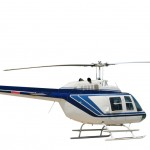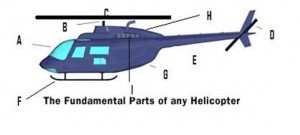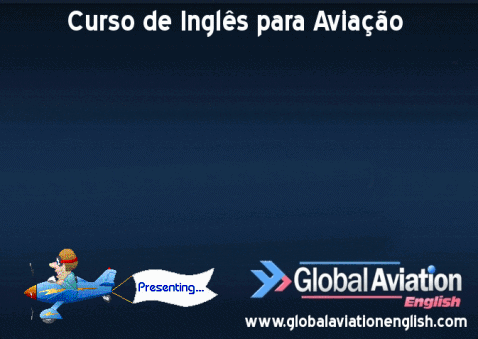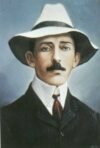Helicopters
[audio:http://aviationenglishblog.com/wp-content/uploads/2010/09/08helicopters.mp3|titles=Helicopters]
Exercise #1: Read about helicopters and then proceed to Exercise #2
Helicopters are the most versatile flying machines in existence today. This versatility gives the pilot complete access to three-dimensional space in a way that no airplane can. If you have ever flown in a helicopter you know that its abilities are exhilarating. The amazing flexibility of helicopters means that they can fly almost anywhere. However, it also means that flying these machines is complicated. The pilot has to think in three dimensions and must use both arms and both legs constantly to keep a helicopter in the air. Piloting a helicopter requires a great deal of training and skill, as well as continuous attention to what is happening with the aircraft.
A helicopter can do three things that an airplane cannot:
- A helicopter can fly backwards.
- The entire aircraft can rotate in the air.
- A helicopter can hover motionless in the air.
All of these maneuvers are nearly impossible in an airplane, which must fly forward at all times in order to develop lift from its wings. If you are going to provide the upward force with a wing, then the wing has to be in motion in order to create lift. Wings create lift by deflecting air downward and benefiting from the equal and opposite reaction that results rotary motion is the easiest way to keep a wing in continuous motion. So you can mount two or more wings on a central shaft and spin the shaft, much like the blades on a ceiling fan. The rotating wings of a helicopter are shaped just like the airfoils of an airplane wing, but generally the wings on a helicopter's rotor are narrow and thin because they must spin so quickly. The helicopter's rotating wing assembly is normally called the main rotor. If you give the main rotor wings a slight angle of attack on the shaft and spin the shaft, the wings start to develop lift.
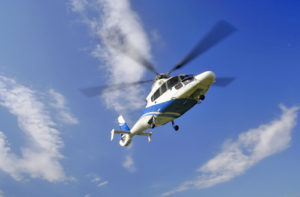 In order to spin the shaft with enough force to lift a human being and the vehicle, you need an engine of some sort power output. Reciprocating gasoline engines and gas turbine engines are the most common types. The engine's driveshaft can connect through a transmission to the main rotor shaft. This arrangement works really well until the moment the vehicle leaves the ground. At that moment, there is nothing to keep the engine (and therefore the body of the vehicle) from spinning just like the main rotor does. So, in the absence of anything to stop it, the body will spin in an opposite direction to the main rotor. To keep the body from spinning, you need to apply a force to it.
In order to spin the shaft with enough force to lift a human being and the vehicle, you need an engine of some sort power output. Reciprocating gasoline engines and gas turbine engines are the most common types. The engine's driveshaft can connect through a transmission to the main rotor shaft. This arrangement works really well until the moment the vehicle leaves the ground. At that moment, there is nothing to keep the engine (and therefore the body of the vehicle) from spinning just like the main rotor does. So, in the absence of anything to stop it, the body will spin in an opposite direction to the main rotor. To keep the body from spinning, you need to apply a force to it.
The usual way to provide a force to the body of the vehicle is to attach another set of rotating wings to a long boom. These wings are known as the tail rotor. The tail rotor produces thrust just like an airplane's propeller does. By producing thrust in a sideways direction, counteracting the engine's desire to spin the body, the tail rotor keeps the body of the helicopter from spinning. Normally, the tail rotor is driven by a long drive shaft that runs from the main rotor's transmission back through the tail boom to a small transmission at the tail rotor.
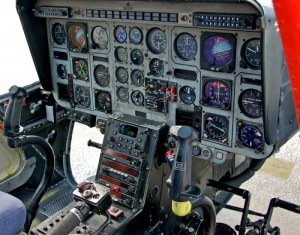 In a car or a plane, the vehicle must be moving in order to turn. In a helicopter, you can move laterally in any direction or you can rotate 360 degrees. These extra degrees of freedom and the skill you must have to master them is what makes helicopters so exciting, but it also makes them complex. To control a helicopter, one hand grasps a control called the cyclic, which controls the lateral direction of the helicopter (including forward, backward, left and right). The other hand grasps a control called the collective, which controls the up and down motion of the helicopter (and also controls engine speed). The pilot's feet rest on pedals that control the tail rotor, which allows the helicopter to rotate in either direction on its axis. It takes both hands and both feet to fly a helicopter!
In a car or a plane, the vehicle must be moving in order to turn. In a helicopter, you can move laterally in any direction or you can rotate 360 degrees. These extra degrees of freedom and the skill you must have to master them is what makes helicopters so exciting, but it also makes them complex. To control a helicopter, one hand grasps a control called the cyclic, which controls the lateral direction of the helicopter (including forward, backward, left and right). The other hand grasps a control called the collective, which controls the up and down motion of the helicopter (and also controls engine speed). The pilot's feet rest on pedals that control the tail rotor, which allows the helicopter to rotate in either direction on its axis. It takes both hands and both feet to fly a helicopter!
Exercise #2: Watch the following videos about flight, and then proceed to Exercise #3
1. A brief introduction on how helicopters move.
Click to watch video
2. See what controls are used to fly a helicopter
Click to watch video
3. This NASA Destination Tomorrow Segment describes how helicopters work and the different types of helicopters in use.
Click to watch video
Exercise #3: Using the following vocabulary list, match the lettered parts of the airplane diagram with their appropriate terminology.
| cockpit | tail rotor | fuel/storage |
| drive shaft | tail boom | engine |
| main rotor | landing skids | air vent |
A___________
B___________
C___________
D___________
E___________
F___________
G___________
H___________
I ___________
Read more Aviation English related articles here!

